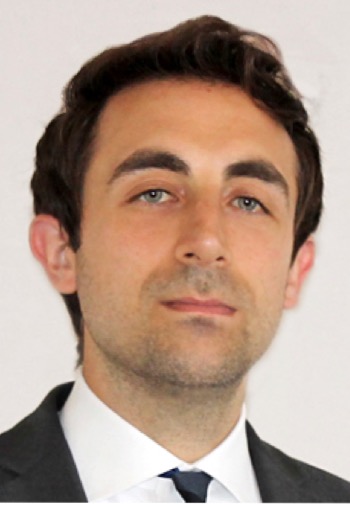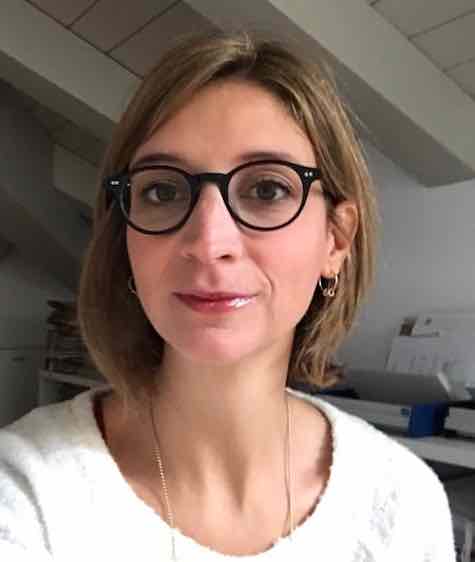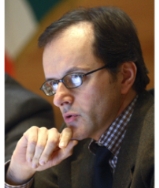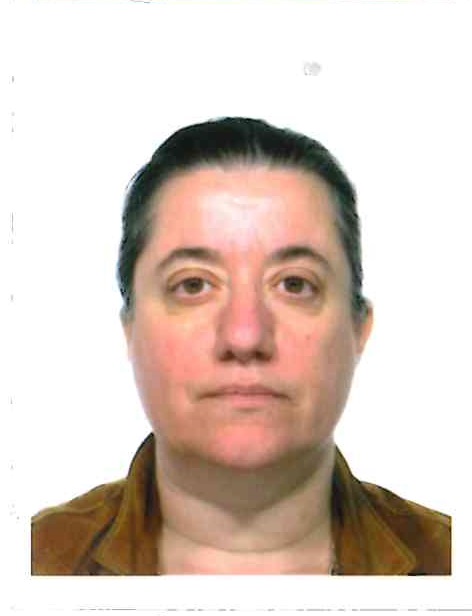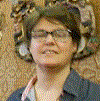Studiare
In questa sezione è possibile reperire le informazioni riguardanti l'organizzazione pratica del corso, lo svolgimento delle attività didattiche, le opportunità formative e i contatti utili durante tutto il percorso di studi, fino al conseguimento del titolo finale.
Calendario accademico
Il calendario accademico riporta le scadenze, gli adempimenti e i periodi rilevanti per la componente studentesca, personale docente e personale dell'Università. Sono inoltre indicate le festività e le chiusure ufficiali dell'Ateneo.
L’anno accademico inizia il 1° ottobre e termina il 30 settembre dell'anno successivo.
Calendario didattico
Il calendario didattico indica i periodi di svolgimento delle attività formative, di sessioni d'esami, di laurea e di chiusura per le festività.
| Periodo | Dal | Al |
|---|---|---|
| ANNUALE | 1-ott-2018 | 1-giu-2019 |
| I semestre | 1-ott-2018 | 12-gen-2019 |
| II semestre | 18-feb-2019 | 1-giu-2019 |
| Sessione | Dal | Al |
|---|---|---|
| ESAMI LINGUE- sessione invernale | 14-gen-2019 | 16-feb-2019 |
| ESAMI LINGUE- sessione estiva | 3-giu-2019 | 27-lug-2019 |
| ESAMI LINGUE- sessione autunnale | 26-ago-2019 | 21-set-2019 |
| Sessione | Dal | Al |
|---|---|---|
| LAUREE LINGUE - sessione autunnale (a.a. 2017/18) | 12-nov-2018 | 17-nov-2018 |
| LAUREE LINGUE - sessione straordinaria (a.a. 2017/18) | 1-apr-2019 | 6-apr-2019 |
| LAUREE LINGUE - sessione estiva (a.a. 2018/19) | 8-lug-2019 | 13-lug-2019 |
| LAUREE LINGUE - sessione autunnale (a.a. 2018/19) | 4-nov-2019 | 9-nov-2019 |
| LAUREE LINGUE - sessione straordinaria (a.a. 2018/19) | 30-mar-2020 | 4-apr-2020 |
| Periodo | Dal | Al |
|---|---|---|
| Festa di Ognissanti | 1-nov-2018 | 1-nov-2018 |
| Sospensione dell'attività didattica | 2-nov-2018 | 3-nov-2018 |
| Festa dell’Immacolata | 8-dic-2018 | 8-dic-2018 |
| VACANZE DI NATALE | 22-dic-2018 | 6-gen-2019 |
| VACANZE DI PASQUA | 19-apr-2019 | 23-apr-2019 |
| Sospensione dell'attività didattica | 24-apr-2019 | 24-apr-2019 |
| Festa della liberazione | 25-apr-2019 | 25-apr-2019 |
| Festa del lavoro | 1-mag-2019 | 1-mag-2019 |
| Sospensione dell'attività didattica | 20-mag-2019 | 20-mag-2019 |
| Festa del Santo Patrono | 21-mag-2019 | 21-mag-2019 |
| Festa della Repubblica | 2-giu-2019 | 2-giu-2019 |
| VACANZE ESTIVE | 13-ago-2019 | 18-ago-2019 |
Calendario esami
Gli appelli d'esame sono gestiti dalla Unità Operativa Segreteria Corsi di Studio Lingue e letterature straniere.
Per consultazione e iscrizione agli appelli d'esame visita il sistema ESSE3.
Per problemi inerenti allo smarrimento della password di accesso ai servizi on-line si prega di rivolgersi al supporto informatico della Scuola o al servizio recupero credenziali
Per dubbi o domande leggi le risposte alle domande più frequenti F.A.Q. Iscrizione Esami
Docenti
 daniele.beltrame@univr.it
daniele.beltrame@univr.it
 bernardo.calabrese@univr.it
bernardo.calabrese@univr.it
 silvia.cavalieri@univr.it
silvia.cavalieri@univr.it
 riccardo.cella@univr.it
riccardo.cella@univr.it
 elisa.dallarosa@univr.it
elisa.dallarosa@univr.it
 katiuscia.darici@univr.it
katiuscia.darici@univr.it
 sara.dattoma@univr.it
sara.dattoma@univr.it
 jacopo.galavotti@univr.it
jacopo.galavotti@univr.it
 diegogabriel.krivochen@univr.it
diegogabriel.krivochen@univr.it
 stefania.montemezzo@univr.it
stefania.montemezzo@univr.it
 chunye.niu@univr.it
chunye.niu@univr.it
 simone.pregnolato@univr.it
simone.pregnolato@univr.it
 fabioantonio.scrignoli@univr.it
fabioantonio.scrignoli@univr.it
 tania.triberio@univr.it
tania.triberio@univr.it
 sonia.trovato@univr.it
sonia.trovato@univr.it
 francesco.zuin@univr.it
francesco.zuin@univr.it
Piano Didattico
Il piano didattico è l'elenco degli insegnamenti e delle altre attività formative che devono essere sostenute nel corso della propria carriera universitaria.
Selezionare il piano didattico in base all'anno accademico di iscrizione.
1° Anno
| Insegnamenti | Crediti | TAF | SSD |
|---|
1a lingua straniera 2a lingua straniera1a letteratura e cultura stranieraLetteratura e cultura tedesca 1
2a letteratura e cultura stranieraLetteratura e cultura tedesca 1
2° Anno Attivato nell'A.A. 2019/2020
| Insegnamenti | Crediti | TAF | SSD |
|---|
1a lingua straniera2a lingua straniera1a letteratura e cultura straniera o materia d'areaDeutsche Literatur und Kultur 2
English literature and culture 2
Literatura y cultura española 2
Littérature et culture françaises 2
2a letteratura e cultura straniera o materia d'areaDeutsche Literatur und Kultur 2
English literature and culture 2
Literatura y cultura española 2
Littérature et culture françaises 2
Letteratura e cultura italiana
Teoria e tecnica della comunicazione
Geografia delle comunicazioni e del commercio internazionale
Storia economica contemporanea
3° Anno Attivato nell'A.A. 2020/2021
| Insegnamenti | Crediti | TAF | SSD |
|---|
1a lingua straniera2a lingua stranieraDiritto pubblico comparato ed europeo
Principi di marketing internazionale
| Insegnamenti | Crediti | TAF | SSD |
|---|
1a lingua straniera 2a lingua straniera1a letteratura e cultura stranieraLetteratura e cultura tedesca 1
2a letteratura e cultura stranieraLetteratura e cultura tedesca 1
| Insegnamenti | Crediti | TAF | SSD |
|---|
1a lingua straniera2a lingua straniera1a letteratura e cultura straniera o materia d'areaDeutsche Literatur und Kultur 2
English literature and culture 2
Literatura y cultura española 2
Littérature et culture françaises 2
2a letteratura e cultura straniera o materia d'areaDeutsche Literatur und Kultur 2
English literature and culture 2
Literatura y cultura española 2
Littérature et culture françaises 2
Letteratura e cultura italiana
Teoria e tecnica della comunicazione
Geografia delle comunicazioni e del commercio internazionale
Storia economica contemporanea
| Insegnamenti | Crediti | TAF | SSD |
|---|
1a lingua straniera2a lingua stranieraDiritto pubblico comparato ed europeo
Principi di marketing internazionale
| Insegnamenti | Crediti | TAF | SSD |
|---|
Legenda | Tipo Attività Formativa (TAF)
TAF (Tipologia Attività Formativa) Tutti gli insegnamenti e le attività sono classificate in diversi tipi di attività formativa, indicati da una lettera.
Deutsche Sprache 2 [CInt] (2019/2020)
Codice insegnamento
4S002920
Docente
Coordinatore
Crediti
9
Lingua di erogazione
Tedesco
Settore Scientifico Disciplinare (SSD)
L-LIN/14 - LINGUA E TRADUZIONE - LINGUA TEDESCA
Periodo
II semestre (Lingue e letterature straniere) dal 17-feb-2020 al 30-mag-2020.
Obiettivi formativi
Al termine del corso, caratterizzato da costante verifica formativa degli obiettivi immediati, intermedi e finali, gli studenti sono in grado di:
- descrivere le categorie di base della morfologia del tedesco;
- riconoscere e spiegare i principali processi morfologici del tedesco;
- descrivere le differenze fondamentali fra i principali processi morfologici del tedesco e dell’italiano;
- applicare le conoscenze acquisite ad esempi specifici della lingua comune e del linguaggio specialistico.
- dimostrare il possesso di una competenza linguistica del tedesco corrispondente al livello B2 del QCER.
Programma
“Il sistema morfologico del tedesco. Introduzione all'analisi morfologica”.
Il corso, che non prevede prerequisiti a livello linguistico di tipo specifico, guida gli studenti nell’apprendimento di alcuni concetti fondamentali della morfologia, come ‘morfo’, ‘morfema’, ‘allomorfo’, ‘affisso’, ‘processo produttivo’ ecc. e descrive la struttura delle parole morfologicamente complesse. I seguenti processi morfologici sono trattati in modo dettagliato: derivazione, flessione, composizione, conversione, Ablaut, Umlaut, riduzioni di parola. I processi morfologici del tedesco saranno confrontati in modo particolare con quelli dell'italiano. Il corso prevede esercitazioni pratiche di analisi morfologica.
La lingua di insegnamento è il tedesco. Gli studenti non frequentanti dovranno concordare il programma d’esame con la docente.
Metodo di insegnamento: lezione frontale e dialogata.
„Einführung in die Morphologie des Deutschen“
In dieser Lehrveranstaltung, die keine speziellen linguistischen Vorkenntnisse voraussetzt, werden Grundkenntnisse im Bereich der Morphologie vermittelt. Grundbegriffe wie ‚Morphem‘, ‚Morph‘, ‚Allomorph‘, ‚Fugenelement‘, ‚Ablaut‘, ‚Umlaut‘, ‚Wortbildungsprozess‘ und ‚Produktivität‘ werden eingeführt. Darüber hinaus werden Wortstrukturen und Regeln der Wortbildung erklärt, wobei wissenschaftliche Analysetechniken eingeübt werden. Die verschiedenen morphologischen Strukturen des Deutschen werden insbesondere mit denen des Italienischen verglichen.
Die Lehrveranstaltung wird in deutscher Sprache angeboten. Die ‘Studenti non frequentanti’ sollen den Prüfungsstoff mit der Dozentin vereinbaren.
Unterrichtsmethode: Frontalunterricht und interaktiver Unterricht
| Autore | Titolo | Casa editrice | Anno | ISBN | Note |
|---|---|---|---|---|---|
| Cantarini, Sibilla | Bildung und Verwendung von Neologismen in der deutschen Wirtschaftssprache der Gegenwart (Edizione 1) | EDUCatt | 2018 | 978-88-9335-289-5 | La lettura di alcune parti di questo testo è obbligatoria per studenti non frequentanti. Die Lektüre einiger Teile dieses Buches ist für ‘Studenti non frequentanti‘ Pflicht. |
| Alber, Birgit | Einführung in die Morphologie des Deutschen (Edizione 2) | QuiEdit | 2015 | 978-88-6464-292-5 | Sia per studenti frequentanti sia per studenti non frequentanti. Sowohl für Studenti frequentanti als auch für Studenti non frequentanti. |
| Graffi, Giorgio; Scalise, Sergio | Le lingue e il linguaggio. Introduzione alla linguistica (Edizione 3) | Il Mulino, Bologna | 2013 | 9788815241795 | Solo per consultazione. Nur zum Nachschlagen. |
| Scalise, Sergio | Morfologia | Il Mulino | 1994 | Solo per consultazione. Nur zum Nachschlagen. |
Modalità d'esame
L'esame si svolge in forma scritta, in lingua tedesca, e sarà costituito da alcune domande teoriche a trattazione sintetica ed alcuni esercizi applicativi. Gli studenti non frequentanti dovranno concordare l’esame scritto con la docente, che sarà tuttavia, nella sua strutturazione, abbastanza simile a quello previsto per gli studenti non frequentanti. L'iscrizione all'esame è subordinata al conseguimento del certificato di B2 (QCER). La verifica della competenza linguistica si basa sulla certificazione del CLA (Centro Linguistico di Ateneo) oppure di altri enti accreditati. Si ricorda che saranno ammessi all'esame solo gli studenti che hanno superato gli esami di Lingua Tedesca 1 e Letteratura Tedesca 1. Il voto finale risulta dalla media dei voti riportati nella prova scritta di esame e nel certificato linguistico (B2).
IN RELAZIONE ALLA SITUAZIONE DERIVANTE DALL’EMERGENZA CORONAVIRUS, LA MODALITÀ D’ESAME SOPRA RIPORTATA VIENE MODIFICATA PER LA SESSIONE ESTIVA 2020, IN ACCORDO CON LE INDICAZIONI DI ATENEO, IN COLLOQUIO ORALE TRAMITE ZOOM SUGLI ARGOMENTI E SULLA BIBLIOGRAFIA DELL’INSEGNAMENTO.
Die Lehrveranstaltung sieht eine schriftliche Prüfung in deutscher Sprache vor, die aus einigen kurz zu beantwortenden theoretischen Fragen und anwendenden Übungen besteht. Die ‘Studenti non frequentanti’ sollen die schriftliche Prüfung mit der Dozentin vereinbaren, die aber in ihrer Struktur derjenigen für ‘Studenti frequentanti’ ziemlich ähnlich sein wird. Voraussetzung für die Prüfung ist die Sprachkompetenz B2 (GERS). Außerdem werden nur diejenigen Studierenden zur Prüfung zugelassen, die bereits Lingua Tedesca 1 und Letteratura Tedesca 1 abgeschlossen haben. Die Endnote setzt sich zusammen aus der Note der Seminarprüfung und der Note des B2-Zertifikats, wobei die Sprachkompetenz durch die Zertifikate des CLA (Centro Linguistico di Ateneo) oder anderer anerkannter Institute nachgewiesen werden kann.
Wegen der Coronakrise wird die oben genannte Prüfungsform für die Sommerprüfungstermine 2020 verändert. Die Prüfung erfolgt mündlich und findet online statt. Die Studierenden, die sich für die Prüfung anmelden, bekommen eine Zoom-Einladung von der Dozentin.
Tipologia di Attività formativa D e F
Per scoprire tutte le attività didattiche accreditate dal Collegio didattico clicca qui
Prospettive
Avvisi degli insegnamenti e del corso di studio
Per la comunità studentesca
Se sei già iscritta/o a un corso di studio, puoi consultare tutti gli avvisi relativi al tuo corso di studi nella tua area riservata MyUnivr.
In questo portale potrai visualizzare informazioni, risorse e servizi utili che riguardano la tua carriera universitaria (libretto online, gestione della carriera Esse3, corsi e-learning, email istituzionale, modulistica di segreteria, procedure amministrative, ecc.).
Entra in MyUnivr con le tue credenziali GIA: solo così potrai ricevere notifica di tutti gli avvisi dei tuoi docenti e della tua segreteria via mail e a breve anche tramite l'app Univr.
Area riservata studenti
Gestione carriere
Assegnazione tutore
Attività accreditate D/F
Calendario didattico dettagliato
Cambio lingua curriculare
Competenze informatiche
Competenze linguistiche (prima e seconda lingua)
Competenze linguistiche in triennale (terza lingua CFU F)
Compilazione del piano didattico
Corso di Lingua portoghese
Erasmus+ e altre esperienze all'estero
Esercitazioni Linguistiche CLA
Presentazione dei corsi di studio e Open day
Prova finale
La prova finale, a cui vengono attribuiti 6 CFU consiste nella preparazione e discussione di un elaborato scritto su materia di uno degli insegnamenti in cui siano stati acquisiti almeno 6 CFU.
La discussione dell'elaborato scritto avviene in presenza di una Commissione Istruttoria composta da due docenti dell'Ateneo che si riunisce nei giorni precedenti la proclamazione e che propone alla Commissione di Laurea (composta da almeno tre docenti) una valutazione. Alla prova finale potranno essere attribuiti non più di 5 punti su 110. L'attribuzione della lode avviene o su proposta del relatore, se l'elaborato è ottimo e la media dei voti conseguiti negli esami dallo Studente raggiunge almeno 110 punti, o in maniera automatica se la media raggiunge almeno 113 punti.
Il voto di laurea è formato da:
a) la media aritmetica dei voti conseguiti negli esami, rapportata a 110,
b) la valutazione dell'elaborato finale,
c) punti supplementari di incentivazione:
- un massimo di 2 punti per le lodi (1 punto per due lodi, 2 punti per più lodi).
- 2 punti per la partecipazione al Programma Erasmus o assimilato, a condizione che lo studente: abbia acquisito almeno 12 CFU per un semestre di mobilità nel corso del ciclo di studi (24 CFU per due semestri di mobilità) e consegua il titolo finale entro la durata normale del corso di studi.
- 1 punto per la partecipazione al Programma Erasmus o assimilato, a condizione che lo studente: abbia acquisito almeno 12 CFU per un semestre di mobilità nel corso del ciclo di studi (24 CFU per due semestri di mobilità) e consegua il titolo finale anche oltre la durata normale del corso di studi.
- Lo studente vincitore del bando del Ministero dell’Università per assistente di lingua italiana all’estero o di borsa Comenius presso scuole di 1° e 2° grado dell’Unione Europea otterrà un punteggio supplementare, che sarà aggiunto alla media finale del voto di laurea: 1 punto, per una esperienza di assistentato fino a 6 mesi; 2 punti, per una esperienza di assistentato superiore a 6 mesi.
Non possono essere attribuiti punti di incentivazione per qualsiasi esperienza all’estero svolta dallo studente su iniziativa privata, anche se riconosciuta come equipollente dal Dipartimento/Collegio Didattico.
- 2 punti per la conclusione degli studi in corso (solo per gli studenti di prima immatricolazione, senza il riconoscimento della carriera pregressa o sospensione di carriera).
Adempimenti amministrativi, scadenze domanda di laurea, calendari delle discussioni elaborato finale e proclamazioni di laurea al seguente link Sessioni di laurea
Elenco delle proposte di tesi e stage
| Stage | Area di ricerca |
|---|---|
| PROGETTO MAMBRINO Stage per bibliografia | Argomenti vari |
Saperi minimi
Stage e tirocini
Nel piano didattico della laurea triennale in Lingue per il turismo e il commercio internazionale (L12) è previsto un periodo di stage obbligatorio (CFU 6) in organizzazioni imprenditoriali.
Le attività di stage sono finalizzate a far acquisire allo studente una conoscenza diretta in settori di particolare interesse per l’inserimento nel mondo del lavoro e per l’acquisizione di abilità professionali specifiche.
Le attività di stage sono svolte sotto la diretta responsabilità di un singolo docente presso studi professionali, enti della pubblica amministrazione, aziende accreditate dall’Ateneo veronese.
I crediti maturati in seguito ad attività di stage saranno attribuiti secondo quanto disposto nel dettaglio dal “Regolamento d’Ateneo per il riconoscimento dei crediti maturati negli stage universitari” vigente.
- Tutte le informazioni in merito agli stage per futuri studenti sono disponibili alla pagina Stage e tirocini.
- Tutte le informazioni in merito agli stage per studenti iscritti sono pubblicate in MyUnivr - come fare per - stage e tirocini.
- Tutte le informazioni in merito agli stage per le aziende sono disponili alla pagina Stage e tirocini per azienze.
Ulteriori informazioni al seguente link https://www.univr.it/it/i-nostri-servizi/gestione-carriere-studenti-lingue-e-letterature-straniere/stage-e-tirocini-lingue-e-letterature-straniere

 +39 045802 8409
+39 045802 8409












